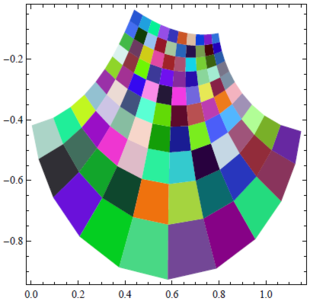14-240/Tutorial-Sep30: Difference between revisions
From Drorbn
Jump to navigationJump to search
| Line 44: | Line 44: | ||
| <math>b</math> |
| <math>b</math> |
||
|} |
|} |
||
We verify that <math>S</math> satisfies (1). By the addition and multiplication tables, <math>S</math>. By the addition and multplication tables, then <math>S</math> satisfies closure, commutativity, associativity and existence of identities and inverses. Since <math>a(b + b) = a(a) = b \neq a = a + a = ab + ab</math>, then <math>S</math> does not satisfy distributivity. Then <math>S</math> satisfies (1). |
We verify that <math>S</math> satisfies (1). By the addition and multiplication tables, <math>S</math>. By the addition and multplication tables, then <math>S</math> satisfies closure, commutativity, associativity and existence of identities and inverses. Since <math>a(b + b) = a(a) = b \neq a = a + a = ab + ab</math>, then <math>S</math> does not satisfy distributivity. Then <math>S</math> satisfies (1). |
||
We verify that <math>S</math> satisfies (2). Since <math>aa = b \neq = a</math>, then <math>S</math> satisfies (2). |
We verify that <math>S</math> satisfies (2). Since <math>aa = b \neq = a</math>, then <math>S</math> satisfies (2). |
||
Revision as of 22:28, 4 October 2014
| |||||||||||||||||||||||||||||||||||||||||||||||||||||||||
Boris
Problem
Find a set of two elements that satisfies the following:
(1) satisfies all the properties of the field except distributivity.
(2) .
Solution:
Let where is the additive identity and is the multiplicative identity and . After trial and error, we have the following addition and multiplication tables:
We verify that satisfies (1). By the addition and multiplication tables, . By the addition and multplication tables, then satisfies closure, commutativity, associativity and existence of identities and inverses. Since , then does not satisfy distributivity. Then satisfies (1).
We verify that satisfies (2). Since , then satisfies (2).











